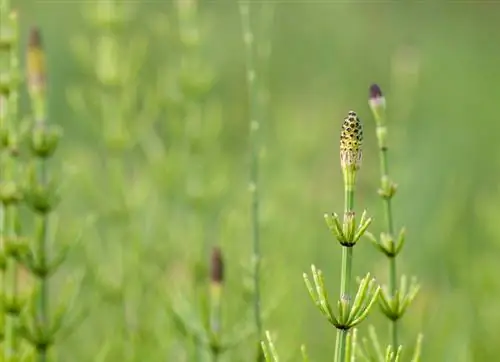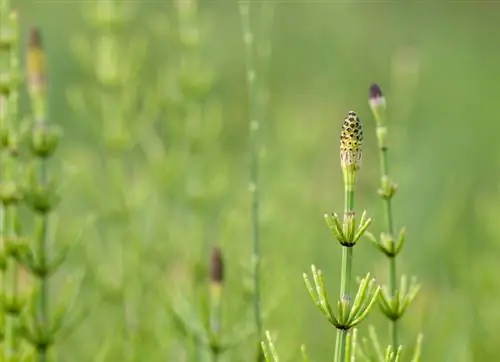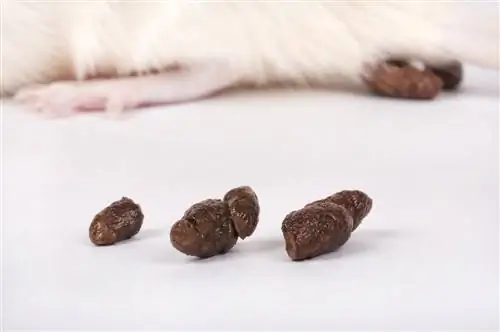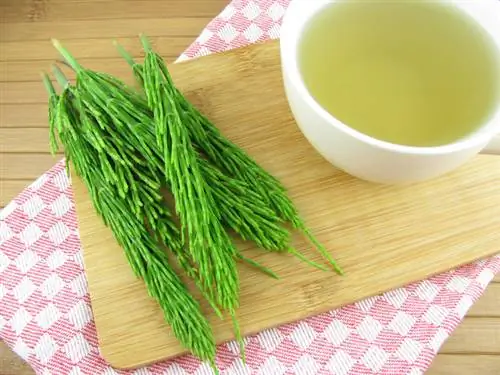- Author admin [email protected].
- Public 2023-12-16 16:46.
- Last modified 2025-01-23 11:20.
horsetail, also known as field horsetail, and marsh horsetail look very similar at first glance. This similarity is not without danger because, unlike horsetail, marsh horsetail is poisonous. What is the difference between the two types of horsetail?

How can you tell the difference between horsetail and horsetail?
The difference between horsetail and marsh horsetail lies in their locations, sporangia, shoots and side shoot lengths. Horsetail is non-poisonous and grows in fields and meadows, while marsh horsetail is poisonous and grows in swampy locations.
Swamp horsetail is poisonous
Swamp horsetail is poisonous in all parts, primarily to grazing animals, but people can also suffer serious poisoning if they eat the herb. Caution is therefore advised when collecting.
Swamp horsetail contains two toxins, namely equisetin and palustrin.
horsetail, on the other hand, is non-poisonous and can even be eaten.
How can you tell marsh horsetail from horsetail?
- Location
- Sporangia
- Cones
- Sprouts
- Sheathing the side branches
As the name suggests, swamp horsetail grows in swampy locations. You should simply avoid these if you want to pick horsetail. Almost only horsetail grows in fields and meadows.
Horsetail does not form flowers, but reproduces via spores that mature in so-called sporangia. In field horsetail, the spores emerge from the ground in front of the characteristic green leaves. When these grow, the sprouts will have disappeared again. If sprout shoots and green shoots appear at the same time, it is marsh horsetail.
Distinguish without a doubt: The length of the side shoots
There is a little trick that will help you determine with almost certainty whether you are looking at non-poisonous horsetail or poisonous marsh horsetail.
Check the distance from one leaf shoot to the next and compare this with the length of the side shoots. If the side shoots are longer than the distance in the main shoot, you are dealing with the edible field horsetail. If they are shorter or the same length, it is the poisonous swamp horsetail. Watch this video to see how you can tell the difference between the two:

Other distinguishing features
In horsetail, the shoot axes are long, while in marsh horsetail they are short. Field horsetail also has thicker stems. They are wider than three millimeters, while the stems of the marsh horsetail are significantly narrower.
Tip
Just like the marsh horsetail, other species of horsetail such as winter horsetail, Japanese horsetail and pond horsetail are also poisonous. These varieties should therefore be kept in the garden with caution.






